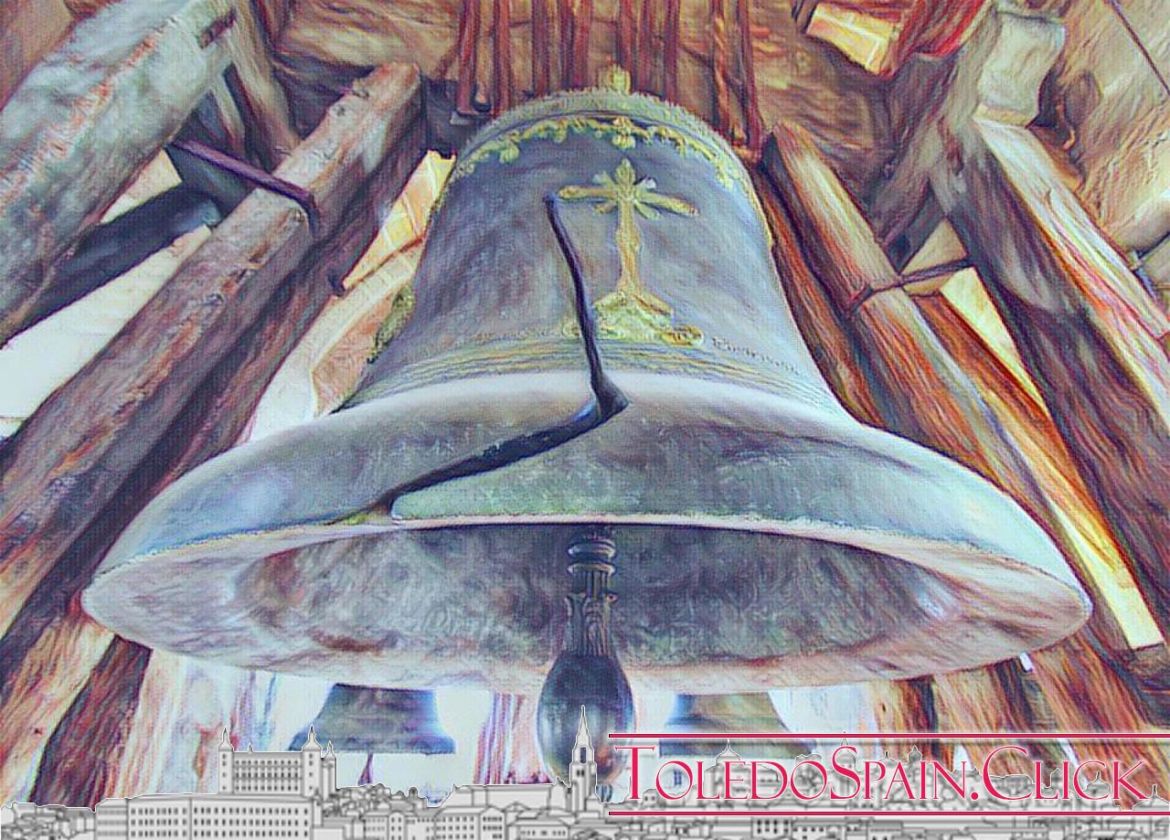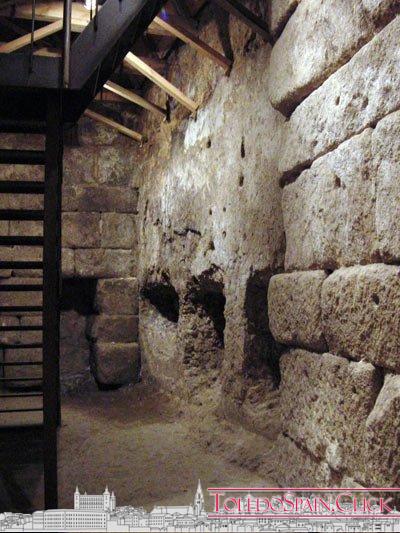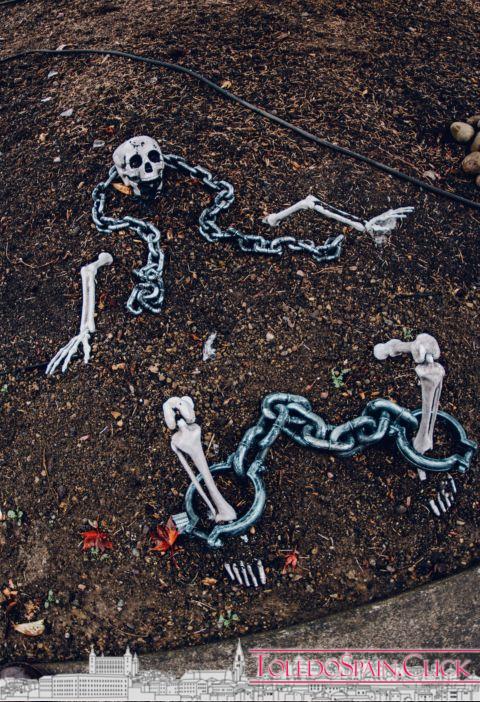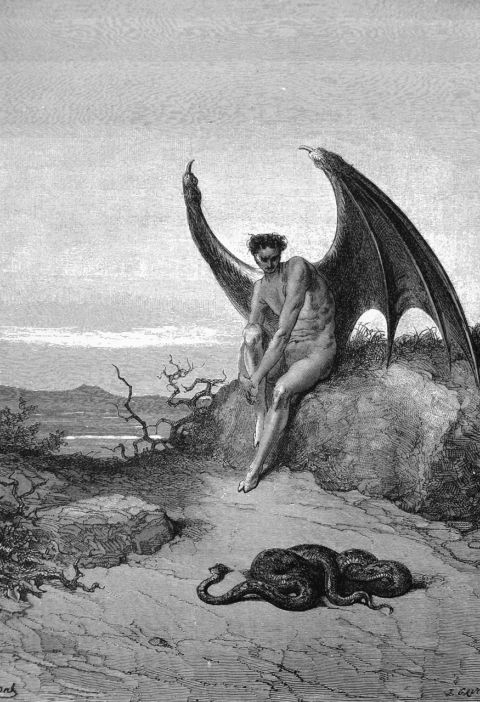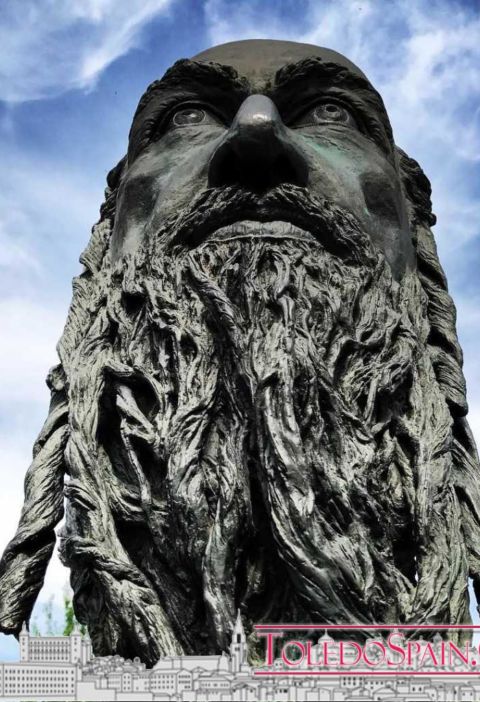The marten (Martes foina) is a carnivorous mammal of the Mustelidae family. It is a nocturnal and silent predator of medium size, it is very astute and dangerous for farms, henhouses, farms and ranches because of its ravages. La Garduña was supposedly a secret criminal society that would have operated in Spain and its colonies from the mid-15th century to the 19th century.
TOLEDO, early 15th century.
If I tell you that the Ndranguetta calabresa, the Camorra napolitana or the Cosa Nostra siciliana have their origin in a secret society created in Toledo in 1412, you will think that this is not possible, but unfortunately it is and this is one of the darkest and enigmatic stories not only of our city, but of Spain and its colonies.
 Toledo Alley
Toledo Alley
Nowadays there are serious doubts about whether La Garduña existed or not, because being an organization similar to Masonry or other similar ones, of these yes the memory of the Spanish ‘illuminatis’ has continued to be spoken instead, it was diluted like a sugar in hot water and never spoken of again and this calls the attention because in its long existence, even its name was used to scare the naughty children by their mothers, as if it were the ‘Man of the Saco’
.
The Garduña was conceived as a secret, esoteric society, with the structure of a religious brotherhood and with initial rites, greetings, gestures, grimaces, oaths of fidelity, passwords, etc. A mark to be worn by ‘the martens’ was three tattooed dots on the palm of the hand, as a sign of recognition.
Opposed to the Santa Hermandad, La Garduña did not take long to become a criminal society in principle to assault houses and unmask Judaizers or Moors, but later its components, were linked to all kinds of blackmail, bribes, kidnappings of children, murders on demand, counterfeit currency, robberies and specialized in all kinds of misdeeds protected by judges, aldermen, clerics, prison wardens and other important charges that in most cases had fallen on their spider’s web perfectly woven by bribery, unto, corruption, etc..
I’m sure you’re also interested: The mystery of a tomb
The secret society was structured in four different degrees presided over by a Big Brother or Grand Master and if we know little about it, it is because logically of all its actions, crimes and other crimes, there could not be written documents and any person who could be described as a ‘snitch’, was annihilated without mercy.
The Garduña was supported by what were said to be ‘High Protectors’ of course unknown to the rest of the members of the organization, such as: foremen, pointers, flowers, postulants, blankets, sirens, snitches, and so on. They used to use beggars or elderly people, who were in charge of watching over the entrances and exits of the people on whom the organization had set its eye. Only the Elder Brother could communicate with the ‘high protectorate’.
As I said before, this society was created in Toledo as a religious brotherhood, but it would not take long to move to Seville following the route of silver, precious stones, jewelry, pearls, rich fabrics and other treasures that arrived at the port of this city from the Spanish colonies, being tacitly mentioned by Cervantes in the work ‘Rinconete y Cortadillo’ and in other works of the Spanish picaresque as ‘El Buscón’ de Quevedo.
As they were considered to be a religious order, they believed themselves to be assisted by divine impunity in order to steal, kill, kidnap and deal without being governed by any rules other than those of their own structure and those who broke those rules paid with their lives without more.
The end of La Garduña is not very clear, on the one hand tells the legend sung in the squares and markets by troubadours and beggars that three Spanish knights: Osso, Mastrosso, and Cargagnosso, belonging to La Garduña, avenged with a crime the tainted honor of a sister, having to flee Spain taking refuge for thirty years in the island of Favignana near Sicily. When they separated, they each created their own three ‘Maffias’ in Italy. At that time Naples belonged to the Spanish crown.
On the other hand, it is known that the disappearance of La Garduña came from the hand of Francisco Cortina due to a murky affair that tells us that the body of a woman named María de Guzmán -who had been kidnapped- along with her murderers and rapists were found in Cortina’s house, (last Big Brother) because he would have killed them in turn for having disobeyed his orders, since it was only a question of kidnapping the lady. Although, as I have said, there could be no documents, no papers, no signatures related to her misdeeds, it seems that following the custom of her predecessors, either by vanity, or by believing themselves to be outside of good and evil and the law, Cortina would have written in the General Ledger of the Order all her criminal activities, with names, dates, data, accounting and also related as heroic acts and boasting about it. After the crimes, the chief hunting officer, Manuel de Cuendías, ordered the search of the house of the Grand Master and there was found The Big Book or Chronicle of La Garduña in 1821 and with such testimony were tried and executed in Seville both him and the main gerifaltes and other ‘garduños’ recognized in 1822. Others fled from Spain taking refuge and enlisting in the Italian ‘Maffias’ or Caribbean piracy. All these matters are intertwined with each other, not being very clear what is true and what is not.
I’m sure you’re also interested: 850 years of the phrase: “Toledo, Toledo, Toledo by King Alfonso VIII”.
This history was forged and began in Toledo under the auspices and protectorate of the Inquisition and the high instances and hierarchies of the State. After its supposed disappearance, it seems to have been condemned to ostracism and oblivion, or worse still, it was made to believe that it never existed, but thanks to the General Ledger or Chronicle of the Order, found in the house of Francisco Cortina and thanks to the minstrels, prostitutes, blind and menestriles, who referred to it in the squares of the cities, it has reached our days and even today we are warned that we must take care of La Garduña.
CARLOS DUEÑAS REY
One of the episodes of the program “Enigmas de nuestra historia” has been dedicated to La Garduña, on the DMAX channel. (Click here)

